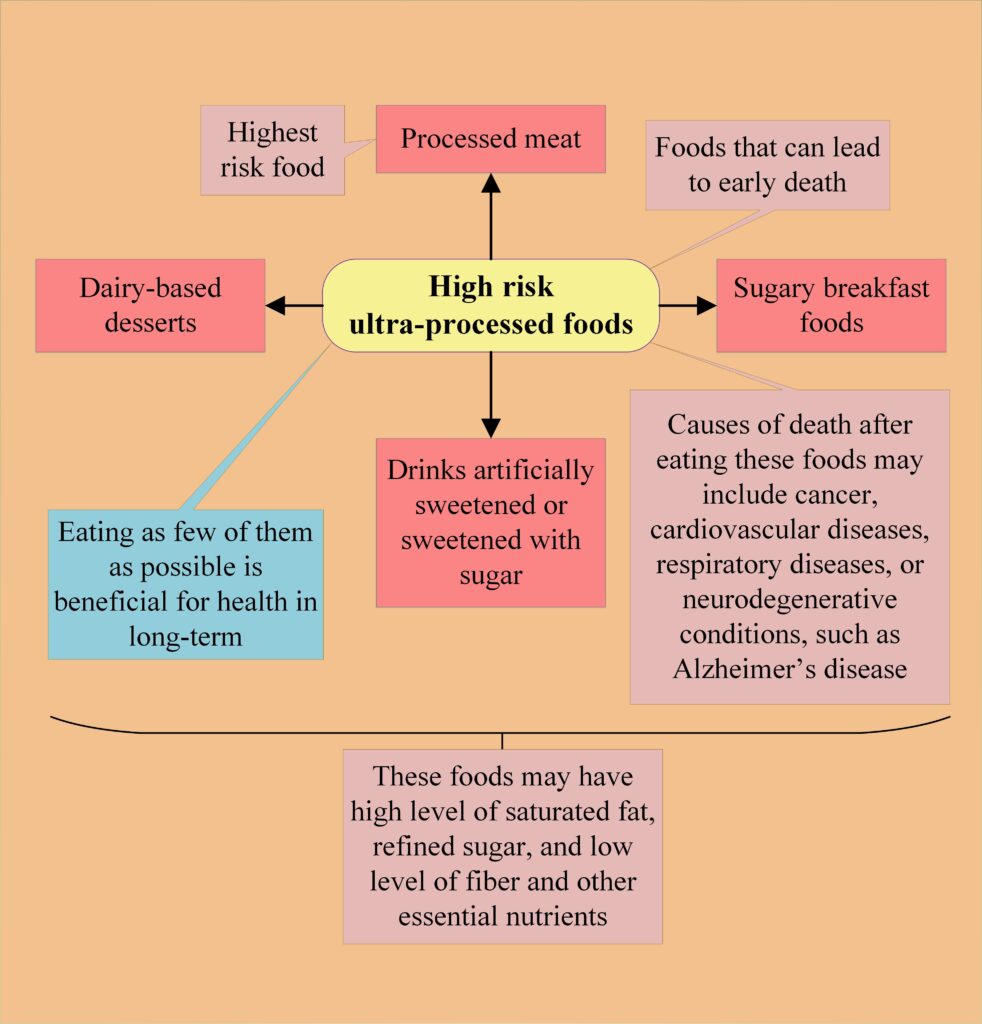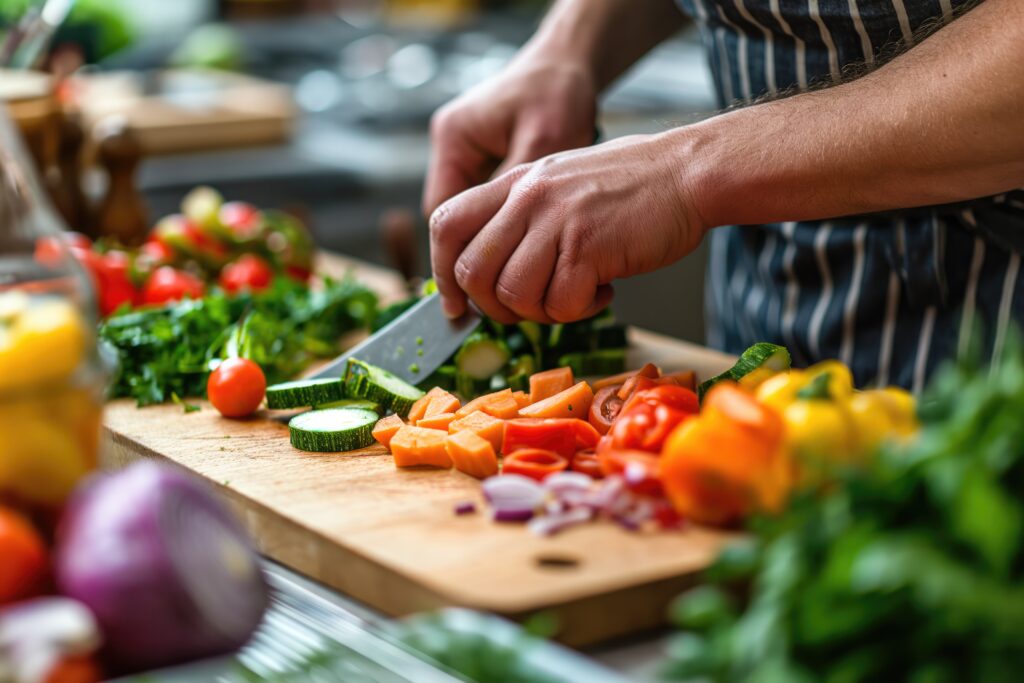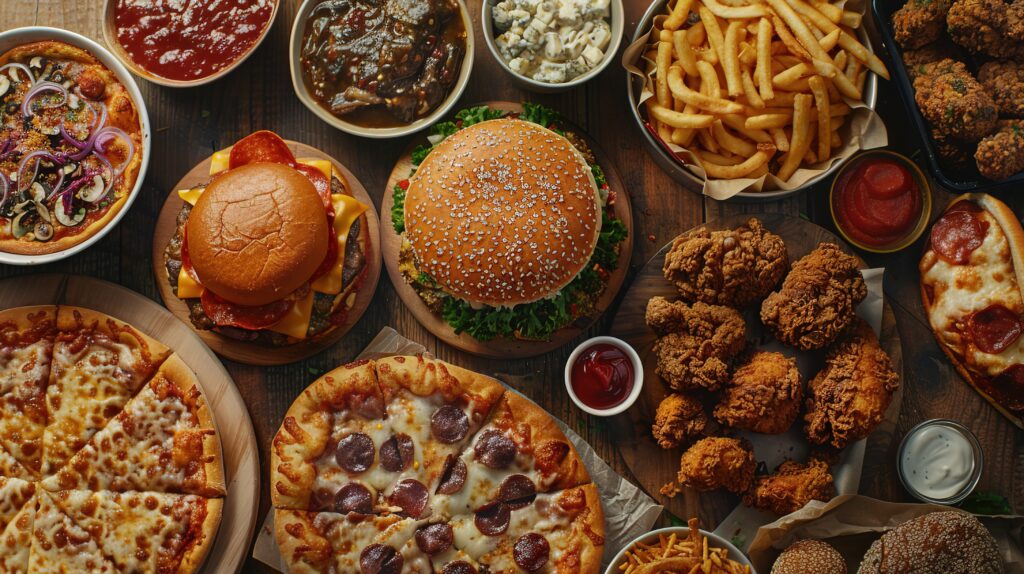Most of you have heard me talk about processed foods and this is unlikely to be the last time. In truth, we confuse “processed” with “ultra-processed”. “Ultra-processed” is the most unhealthy food group, they make up a whopping 58 percent of American diets. “Ultra-processed” foods include foods with added sugar—these make up 90 percent of American diets. luckily there is a way to categorize these into four groups using a NOVA score. NOVA is a word not an acronym.
NOVA score 1 categorizes whole, unprocessed or minimally processed foods
Before we get into ultra-processed foods, let’s brush up on what unprocessed foods are. Unprocessed food (and beverage) options are basically those foods that are still in their whole form, or most natural state, at the time of purchase—hence the name, they have not been (or have been very, very minimally) processed. Because of this, they typically have all their naturally occurring nutrients intact—including any fiber, protein, healthy fats, vitamins, minerals, or plant compounds they may contain.
Examples include fruits and vegetables, nuts and other seeds, wild-caught fish, 100 percent grass fed and finished beef, pastured chickens and their eggs… these animal products may or may not be labeled organic yet they typically are anyway. Farmers and ranchers have much paperwork and many inspections to label their products organic and many use organic practices without bothering with the organic label.
What makes food “processed”?
Processed foods tend to be more nutrient-dense with fewer ingredients, additives, and refinement. Basically, Processed food is any food that has undergone changes that alter the natural state of the food—this could be as simple as heating, freezing, dicing, and juicing. This does not necessarily make them “bad”. In fact kitchens that prep chopped foods, frozen (or freezing your own) produce, cooking food yourself make life efficient and quite healthy. By definition, these actions “process” the food yet leave them very close to their natural state.
NOVA score 2 is used for minimally processed culinary ingredients
Examples include olive oil and other extracted oils, fats such as coconut oil and lard, butters, honeys, maple syrup, certain vinegars—usually a byproduct of the wine-making industry. These are from plants and animals treated with kindness.
NOVA scores 3 and 4: What makes a food “ultra-processed”?
NOVA score 3 foods can have a small amount of additives. These can include a small number of additives to enhance shelf life, protect the properties of unprocessed food, prevent the spread of microorganisms… Examples include aged cheese (not cheeses like Velvita, etc.), canned foods (ideally in BPA-free cans and without many additives). For example, my Muir Glen can of crushed tomatoes does have added citric acid and sea salt. Those don’t necessarily make it unhealthy. Other examples are salted nuts (ideally sea salt), canned in water or smoked fish that does not use cane or corn sugar in the brine (choose maple syrup), this group also includes fermented alcoholic beverages such as beer, hard cider, and wine.
NOVA score 4 is used for the inclusion of unnatural ingredients that your body is not designed to use. These include chemicals such as artificial flavors (smoke flavoring, fruit “juice” that really has no juice in it, vinegars that are a non-brewed condiment… there are many and it is deceiving due to their names), colors like Blue 1. Artificial Coloring: Beverages, candy, baked goods… Blue 2. Artificial Coloring: Pet food, beverages, candy… Citrus red 2… Green 3… Orange B… Red 3… Red 40… Yellow 5. Most preservatives, and that’s not all.
While many ingredients exist in nature, they can be so drastically altered during industrial processes as to no longer resemble their source. Take anything made with flour including whole grain products. These are mechanically ground or separated then recombined in a way that is not truly the “whole grain”. And white flour is devoid of all fibers and natural nutrients found in the whole grain. Furthermore, wheat grown in the U.S. has been hybridized to be 50 times higher in gluten than its heritage version.
There are hundreds of ingredients in the ultra-processed world. Among them are industrial sweeteners such as cane sugar (even raw), corn sugar, glucose, fructose, and maltodextrin (a corn product), zero calorie sweeteners as these still spike insulin which is inflammatory, . There are hydrogenated oils, emulsifiers, texturizers (example), and protein isolates.
Take corn as another example. Corn is a real food yet high fructose corn syrup doesn’t look anything like it. (changes made to heritage corn).
Australian researchers recently analyzed dozens of studies and found these ingredients are detrimental to our health in many ways.
Note, the Monteiro article is quite readable and has many additional original research references. There is a beautifully-prepared with helpful images version here: https://worldnutritionjournal.org/index.php/wn/article/view/5/4. This article is intended for non-research minded and describes the NOVA ranking system and why it is a better method of classifying various consumer items according to degree of unnatural ingredients. The worse the NOVA score, the more likely an item will cause unwanted health issues.
 The more ultra-processed foods in a diet, the higher the odds of:
The more ultra-processed foods in a diet, the higher the odds of:
| · Elevated blood sugar
· Inflammatory belly fat · Overweight · Obesity · High blood pressure · High triglycerides · Low (“good”) HDL cholesterol
|
Not to mention mental health and learning:· Anxiety · Depression · Sleep problems · Being labeled with attention deficits · Autism
|
Joint and muscle conditions and autoimmune diseases:· Arthritis · Fibromyalgia · Lupus · Hashimoto’s or Grave’s thyroid imbalances · Celiac disease · Multiple sclerosis
|
These lead to greater likelihood of:· Type 2 diabetes · Heart disease · Stroke · Nonalcoholic fatty liver · Breast cancer · Central nervous system tumors · Leukemia · Colorectal cancer · Pancreatic cancer · Prostate cancer
|
Digestive conditions:· Microbiome imbalances · Crohn’s disease · Ulcerative colitis · Reflux · Gas and bloating Respiratory conditions:· Asthma · Wheezing
|
Earlier death due to:· Cancer · Stroke · Heart disease Poor quality of life due to any unwanted symptoms
|
We spend many thousands of dollars on these health problems rather than take charge of our diet, ingredients, and avoiding the problems in the first place. Sadly, many of these additives, even gluten and gluten-like proteins found in cereal grains store in our bodies or get trapped in our digestive track for a very long time.
What to do?
Take the time to read food labels—it takes just a moment. Follow this rule of thumb: If an item in the ingredients list can’t be found in a home cook’s kitchen or your grandmother’s recipes, it’s likely ultra-processed and should be avoided. If you don’t know what an ingredient is, it probably isn’t in a home cooks kitchen or grandmother’s recipe either. This includes pre-made grocery items labeled “healthy”, or “natural”. Another rule of thumb: If it needs a label, it isn’t food.
Find convenient options that are not processed foods: Fresh, frozen, BPA-free canned vegetables and fruits; grass-fed meats, wild-caught fish, pastured poultry and their eggs… these are unlikely to have harmful added ingredients.
Ideally, spend some time in the kitchen. Don’t make it complicated unless you enjoy cooking. Check out my hundreds of recipe makeovers at OurNutritionKitchen.com. For more than a decade I’ve been answering the question called “Marie, what can I eat?” by posting healthy and usually simple recipes (there are elegant and more complicated recipes also). These all have pictures so you can see the final product and none have ingredients that would categorize them as ultra-processed.
Other ideas: Double the recipe so you can take it for lunch or re-heat in the oven or on the stove for dinner on a busy day. Consider a protein smoothie for breakfast, ideally using plain whey or collagen proteins then add your own fruit (fresh or frozen), and/or greens.
References:
Fang, Z., Rossato, S. L., Hang, D., Khandpur, N., Wang, K., Lo, C. H., Willett, W. C., Giovannucci, E. L., & Song, M. (2024). Association of ultra-processed food consumption with all cause and cause specific mortality: population based cohort study. BMJ (Clinical research ed.), 385, e078476. https://doi.org/10.1136/bmj-2023-078476
Lane, M. M., Gamage, E., Travica, N., Dissanayaka, T., Ashtree, D. N., Gauci, S., Lotfaliany, M., O’Neil, A., Jacka, F. N., & Marx, W. (2022). Ultra-Processed Food Consumption and Mental Health: A Systematic Review and Meta-Analysis of Observational Studies. Nutrients, 14(13), 2568.
Lane, M. M., Gamage, E., Du, S., Ashtree, D. N., McGuinness, A. J., Gauci, S., Baker, P., Lawrence, M., Rebholz, C. M., Srour, B., Touvier, M., Jacka, F. N., O’Neil, A., Segasby, T., & Marx, W. (2024). Ultra-processed food exposure and adverse health outcomes: umbrella review of epidemiological meta-analyses. BMJ (Clinical research ed.), 384, e077310.
Martínez Steele, E., Baraldi, L. G., Louzada, M. L., Moubarac, J. C., Mozaffarian, D., & Monteiro, C. A. (2016). Ultra-processed foods and added sugars in the US diet: evidence from a nationally representative cross-sectional study. BMJ open, 6(3), e009892. https://doi.org/10.1136/bmjopen-2015-009892
Monteiro, C. A., Cannon, G., Levy, R. B., Moubarac, J. C., Louzada, M. L., Rauber, F., Khandpur, N., Cediel, G., Neri, D., Martinez-Steele, E., Baraldi, L. G., & Jaime, P. C. (2019). Ultra-processed foods: what they are and how to identify them. Public health nutrition, 22(5), 936–941.
Zhong, G. C., Gu, H. T., Peng, Y., Wang, K., Wu, Y. Q., Hu, T. Y., Jing, F. C., & Hao, F. B. (2021). Association of ultra-processed food consumption with cardiovascular mortality in the US population: long-term results from a large prospective multicenter study. The international journal of behavioral nutrition and physical activity, 18(1), 21.



Leave a Reply
You must be logged in to post a comment.